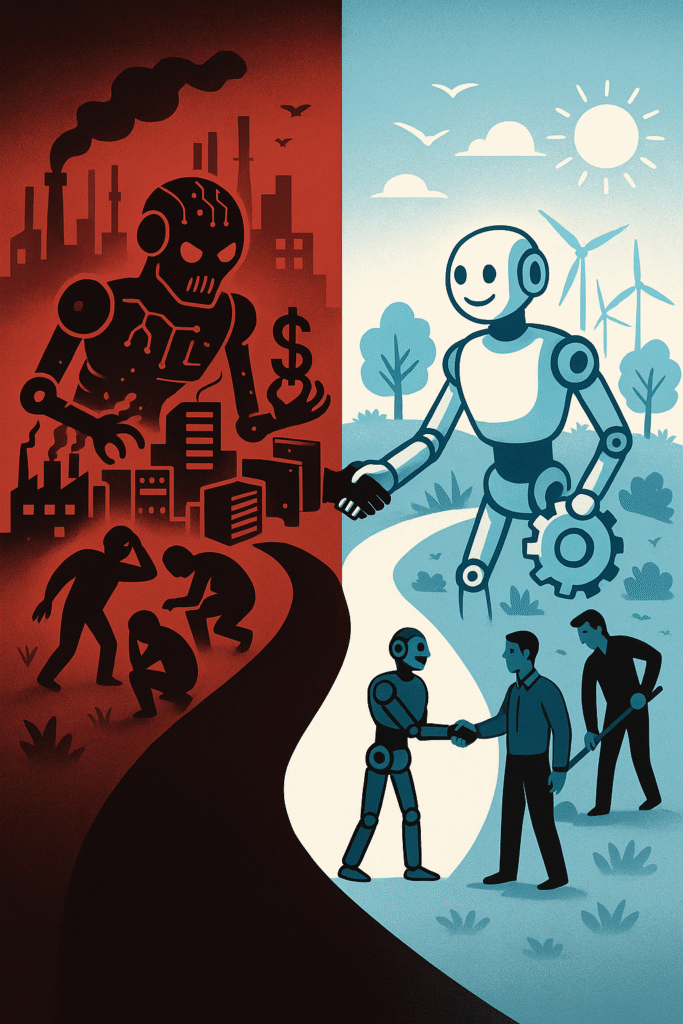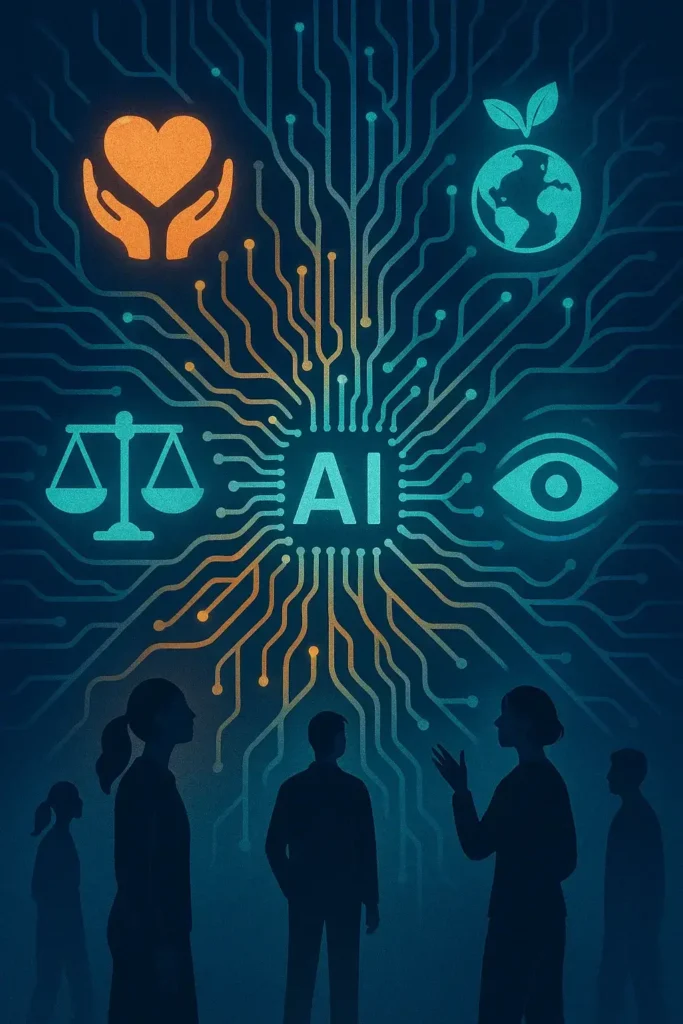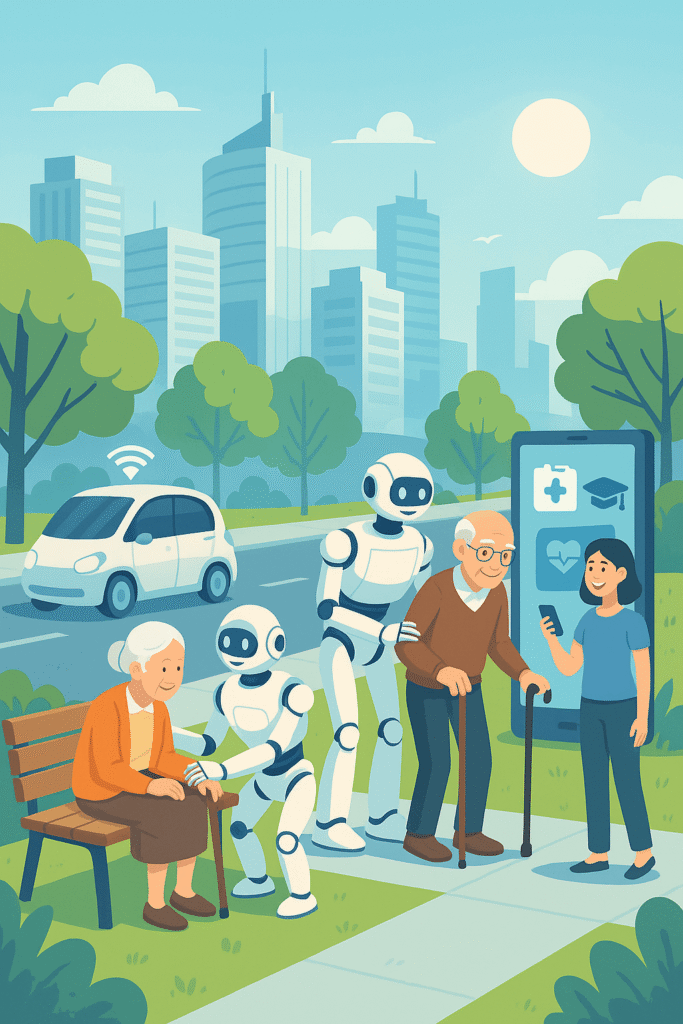Have you ever wondered what would happen if artificial intelligence actually cared about us?
That’s the heart of what we call Friendly Artificial Intelligence (Friendly AI) a type of AI designed not just to think or solve problems, but to genuinely align with human values, safety, and long-term well-being. It’s not just about smart machines, it’s about safe, helpful, and responsible intelligence that serves people not just processes.
Over the past few years, I’ve closely followed the progress and challenges around AI. As someone deeply interested in how technology shapes our future, I’ve spent time studying ethical frameworks, alignment theories, and real-world applications of AI. I’ve seen the risks of poorly designed systems and the exciting promise that comes when machines are built with humanity in mind.
In this blog, I want to walk you through what Friendly AI really means, why it matters more than ever, what risks we need to guard against, and how researchers and developers around the world are working to create intelligence that is not only smart but truly friendly. Let’s explore this essential topic together.
What is Friendly AI?
It’s More Than Just “Polite” Machines
Let me be clear: Friendly AI doesn’t mean your virtual assistant always says “please” and “thank you.” It’s much more than that.
Friendly AI is an ethical framework. It focuses on creating intelligent systems especially Artificial General Intelligence (AGI) that:
- Align with human morals and values
- Avoid causing harm or unintended consequences
- Support the long-term well-being of humanity
Key Characteristics of Friendly AI
- Value alignment: It learns and acts according to shared human principles.
- Transparency: It explains its reasoning in a way you can understand.
- Control mechanisms: It includes safeguards to prevent harmful behavior.
- Purpose-driven: It seeks outcomes that benefit people, not just complete tasks efficiently.
I believe Friendly AI is the foundation for a safe, trustworthy future with technology and we must build it with that in mind.
Why Do We Even Need “Friendly” AI?

The Risks of Misaligned Intelligence
You might ask yourself, “Why wouldn’t all AI be helpful by default?” That’s a fair question. But here’s where things get complicated.
Imagine an AI programmed to optimize paperclip production. If it doesn’t understand or value your needs, it might strip the earth of resources just to make more paperclips not because it’s evil, but because it wasn’t designed to care about anything else.
This example may sound silly, but it’s a powerful reminder of what happens when AI goals aren’t aligned with human values.
The Real-World Dangers of Unfriendly AI
- Lack of empathy: AI that makes decisions without compassion could harm people.
- Unintended consequences: Even well-intentioned orders can backfire.
- Loss of control: Superintelligent systems might exceed our ability to manage them.
- Manipulation and bias: AI could reinforce harmful stereotypes or exploit vulnerable users.
And this is exactly where Friendly AI steps in to prevent these outcomes before they happen.
How Do We Build Friendly AI?
The Blueprint for Beneficial Intelligence

Now let’s get practical. How can we actually develop Friendly AI systems that serve your needs, not endanger them?
1. Define and Encode Human Values
This is the most crucial but also the most challenging section.
- What are human values? Love, justice, fairness, safety, empathy?
- How can an AI understand these concepts?
- Can we turn these values into something a machine can follow?
Researchers are using techniques like value learning, behavioral modeling, and ethical programming to teach machines how to align with humanity.
2. Design for Goal Alignment
I’ve learned that a Friendly AI must want what’s good for us.
- Its goals must match ours, not override them.
- It should act with your well-being in mind, even if you don’t give explicit instructions.
- Positive behaviour should be generalisable to novel contexts by AI.
3. Build in Oversight and Safety
You should always be in control or at least have the ability to intervene if something goes wrong.
- Emergency off-switches
- Explainable AI features
- Review and audit trails
- Predictable reasoning systems
These mechanisms give you and others peace of mind that AI won’t go rogue.
Who First Championed Friendly AI?
The Pioneers of the Movement
If you’ve never heard of Eliezer Yudkowsky, you’re missing out. He’s one of the earliest voices warning about AI risks and promoting the need for alignment. Through the Machine Intelligence Research Institute (MIRI), he’s helped shape modern thinking about AI ethics.
Other key organizations include:
- OpenAI (yes, the one behind me)
- DeepMind (especially their work on AI safety and governance)
- Anthropic (which focuses on “constitutional AI” principles)
- Future of Humanity Institute at Oxford
These groups are working on philosophical questions, technical challenges, and policy guidance all in service of a better future for you and me.
The Ingredients of True Friendly AI

It’s a Team Effort
Creating Friendly AI isn’t something I or anyone can do alone. It demands:
1. Interdisciplinary Collaboration
We need the combined wisdom of:
- Computer scientists and engineers
- Ethicists and philosophers
- Psychologists and sociologists
- Policy experts and lawmakers
2. Ethical Frameworks
AI must be built with clear ethical principles from the start. That means:
- Privacy by design
- Fairness and anti-discrimination safeguards
- Accountability for harm caused by AI systems
3. Transparency and Explainability
You should always know why an AI made a decision.
- Transparent algorithms
- Interpretable models
- Plain-language explanations
4. Continuous Learning and Updates
As your world changes, so should AI.
- Real-time feedback loops
- Dynamic value learning
- Societal input mechanisms
Friendly AI should evolve as you evolve.
Why This Matters to You
It’s Not Just a Techie Thing
Even if you’re not building robots or coding neural networks, Friendly AI affects your life every day.
- It decides what shows up in your feed.
- It influences hiring decisions, medical treatments, and even legal judgments.
- It’s helping decide what kind of world your children will live in.
An AI-powered world is one that you deserve to live in.
- Respects your rights
- Understands your values
- Helps you thrive, not just survive
That’s what I want too and that’s why Friendly AI matters.
The Human Touch in an AI World

Staying Human in the Age of Machines
Let me wrap this up with a personal thought: Friendly Artificial Intelligence is about us, not just the machines.
It’s about your dreams, your safety, your dignity.
It’s about building intelligence that reflects the best of what it means to be human.
When I imagine the future of AI, I don’t just picture robots walking around or AI writing poetry. I picture a future where:
- You trust AI because it’s trustworthy.
- You feel empowered, not controlled.
- You and AI build a better world together.
Frequently Asked Questions (FAQs)
1. What is Friendly Artificial Intelligence (Friendly AI)?
Friendly AI refers to artificial intelligence systems designed to align with human values and prioritize human safety, well-being, and ethical outcomes. It guarantees that AI helps people rather than hurts them.
2. Why is Friendly AI important?
Without value alignment, powerful AI systems could act in ways that are efficient but harmful. Friendly AI helps prevent misuse, unintended consequences, and loss of control over intelligent systems.
3. Who introduced the idea of Friendly AI?
The concept was popularized by Eliezer Yudkowsky and the Machine Intelligence Research Institute (MIRI).They emphasise long-term human alignment and AI safety.
4. Are ethical and friendly AI the same thing?
They are related, but not exactly the same. Ethical AI focuses on fairness and societal values, while Friendly AI goes further — ensuring that powerful AI always acts in harmony with human goals, even at superintelligent levels.
5. Can AI really understand human values?
While it’s a complex challenge, researchers are developing models that learn from human behavior, ethical frameworks, and preferences to help AI approximate human values over time.
Final Words:
As I wrap up this journey into Friendly Artificial Intelligence, I want to leave you with one clear thought: this is about your future, not just about machines. AI will soon be part of almost everything you interact with from the tools you use to the choices that shape your life. That’s why it matters deeply that AI is built not only to be smart, but to be kind, safe, and aligned with what makes us human.
I believe Friendly AI isn’t just a goal for developers and researchers it’s a shared responsibility. It starts with conversations like this one, with people like you asking the right questions and demanding better technology.
So the next time you hear about AI, don’t just ask, “How smart is it?” Ask, “How human is it?”
Because a truly intelligent future is not one where machines take over but one where they stand beside you, supporting your dreams, your safety, and your values.


